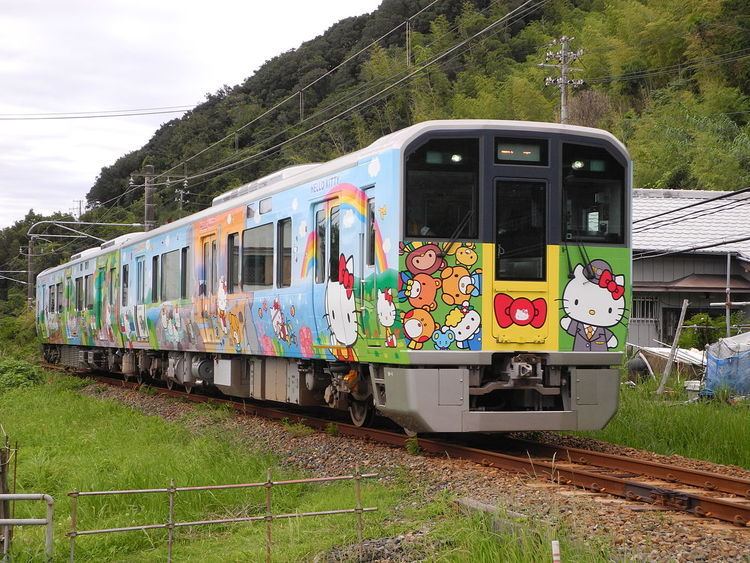Constructed 2012 Formation 2 cars per trainset | Built at Osaka Number built 2 vehicles (1 set) Capacity 259 per set | |
 | ||
The Smart BEST is an experimental Japanese two-car self-charging battery electric multiple unit (BEMU) train developed and manufactured by Kinki Sharyo in 2012 to demonstrate the feasibility of battery train technology for use on non-electrified rural lines. The name is an acronym for "Battery Engine Synergy Train". The train has been tested on JR West and JR Shikoku lines since late 2012.
Contents
Overview
The Smart BEST train operates using GS Yuasa LIM30H-8A lithium-ion storage battery modules recharged in operation by a small-capacity "e-Brid Plus" diesel engine. The train normally operates at a maximum speed of 70 km/h (45 mph), but is capable of 100 km/h (60 mph) over short distances.
Formation
The two-car train is formed as shown below, with one motored (M) car and one non-powered trailer (T) car.
Interior
Seating accommodation is arranged as 2+2 abreast transverse seating with seat backs that flip over to face the direction of travel.
History
The "Smart BEST" train was unveiled to the media in October 2012 at the Kinki Sharyo factory in Osaka, before being moved to Yonago, Tottori for test running on the Sanin Main Line, Sakai Line, and Hakubi Line. It was returned to Kinki Sharyo in December 2012. In December 2013, the train was moved to Takamatsu, Kagawa, and started test running on a number of lines in Shikoku, including the Kōtoku Line, Naruto Line, and Tokushima Line.
From September until December 2014, the train was used in revenue service on promotional "Hello Kitty" services in the Wakayama area.
